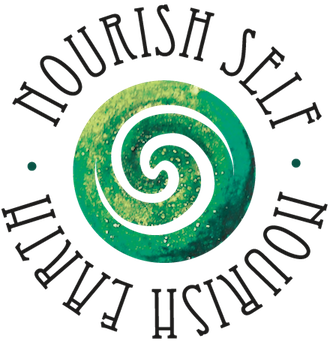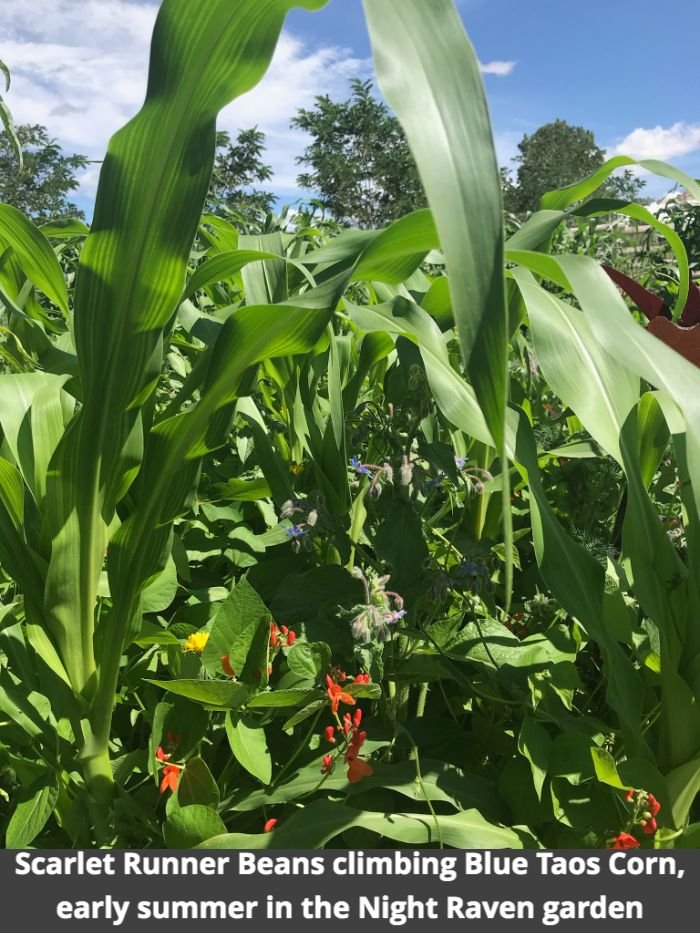Bringing in the Harvest
It is mid-August as I write this and I’m sitting alongside a rushing creek in a meadow, amidst red clover, yellow dock, yarrow, mint, rose, dandelion and horsetail, with a giant twin Ponderosa tree before me and a pinion and juniper forest on the edges. I have had my swim in the icy water and have just finished my daily practice of journaling with my cold tea latte. I never miss this time to connect with my Self and Wild Nature.
In this space today I am reflecting on the summer…the heat of June, the three glorious weeks of monsoon in July and now the heat of August with the smoke filled skies from wildfires to the west.
My garden has flourished…seeds germinating quickly at the start of the season, and then the blessed rains came. Each day the billowing white clouds we call “builders” would rise as if coming out of the Aquarius Plateau to the north. We could count on rain by 3pm if the clouds filled the sky by 11am, and this happened every day. We delighted in waterfalls pouring off our mesa and the mountain flushing out in green and a mosaic of colorful wild flowers. Toads returned to our garden after a three-year absence since the last time the monsoons flooded these parts.
Constance collecting baskets of bright calendula in the Night Raven Garden
My garden thrived with the humidity and daily cloud cover. The only drawback was that my herbs wouldn’t dry so I moderated my pace with collecting. Now I need to make haste and move into full production, as it is the height of the season. This morning alone I collected baskets of Chinese mint, skullcap, lemon balm, comfrey and red clover and put away trays of calendula and potentilla. The next few mornings I’ll continue to collect from my garden—brilliant calendula flowers, little daisy like chamomile, mallow, salvia, rudbeckia, raspberry leaf and grindelia.
Chamomile, milky oats and calendula
Then up to the mountain for more wild crafting and into the desert for horsetail, licorice root, sagebrush, sumac, ephedra viridis, Manzanita, and lavender mint. After drying these plants and jarring them up I will add them to my pantry of herbs I already collected this season…gallons of nettles, mullein, dandelion, rose, yarrow, St. John’s Wort and last fall’s Hawthorne berries.
I love the dance of collecting and then spreading out plants on drying racks and hanging other plants I can bundle with a rubber band and twist tie to a clothesline in the wall tent I use as a drying room. I love imagining the remedies I’ll prepare… the special tea blends, infused oils for salves and balms as well as medicinal honeys. I love watching my pantry fill up with colorful jars of dried herbs and the satisfaction of knowing just how much to collect to get me through the winter supporting myself and others with herbal remedies.
This rhythm of bringing in the harvest is deep in my bones and I am grateful to the plants as my allies and teachers…reminding me that all that this Earth offers to us is a gift…
Nettles drying
The Last Days of Summer... Harvesting Blue Corn
guest written by Tessa Barkan
I harvest the blue corn in the last days of summer. Most of the corn seems ready; the husks are dry and I can see bright purple and blue gemstones peering out of the husks, many of which are beginning to peel back on their own. I sit next to the corn before I begin. The corn look like people from this angle.
I remember a day in early summer three years ago, the first time I grew blue corn. It was hot then, probably sometime in July, and I went to the garden in a state of sadness.
Weeding with my back to the then-adolescent corn, I felt a sense pour over my back, the feeling of a lightness reaching towards me then pulling me up somehow, releasing the tightened places that had been inside of me. I was surprised by the feeling and turned around and saw the corn, animate, like a group of tall, skinny people who were looking down on me as I crouched beside them. It wasn’t the first time they had shown their animacy. I had already seen the way they had risen from the ground, the way corn grows with intention: each stalk facing a distinctly different direction as if one rose from the ground saying “I will face towards the mountain,” and another “I will face towards the rising sun.”
Corn and sunflowers, mid-summer
Being with them on that summer day three years ago, and feeling like we were connecting in a way that left me feeling lighter, I simultaneously realized that in not too much time, the corn would be gone. The summer would inevitably progress, and I wondered what it would look like, the plants drying then dying, me ultimately cutting them back to the ground, all of these things that would happen sometime within the next two months. I wondered what it would be like, the closing of season, what it would be like to one day harvest the husks, dry the kernels, boil them in wood ash, grind them to flour; what it would be like to eat them. I was reminded of Robert Heinlein’s martians from Stranger in a Strange Land, who eat their deceased loved ones as a form of communion.
I think of my own ancestors and the plants that they would have grown for food and corn is not one of them. When I grow garlic I think of my people, and onions and coriander and parsley and thus far futile attempts at cumin. I love growing these plants, in part to honor and be with the plants that my ancestors long ago would have eaten and had long-standing relationships with. Yet I’d never had such an experience of alive-ness from these other plants in my garden. Corn is a plant that was raised and loved and fostered in this landscape. I believe that the blue corn, being close to the places where they have lived and lived and lived, were truly happy to be alive again in a setting that they could recognize.
I think of all this as I sit next to the corn people, in the last days of summer. Dry now and sand-colored, brittle and bending, some snapped, tassels scraping ground, ready to gather.
I remember cradling them as seeds, opening pockets in the ground, anticipation. And before that, I remember where the blue corn seeds came to me from: a handful from a woman in Southern Arizona who shared my Jewish lineage, who taught about death and how to make posole. A single handful of those seeds became three small rows of corn; and now hundreds, maybe thousands of those purple and blue gemstone seeds surround me, glimmering.
Overwhelmed by the continuing power of creation, I understand an aspect of seed saving for the first time. Seed saving is a form of parenting, in which you get to watch not just one or two or three generations unfold but possibly twenty or thirty or forty or fifty generations— or more. The seeds saved from this year, if I am lucky and if I am careful and attentive, and if the weather and the ground and the seeds themselves grant it, will be the great great great grandparents of summers to come; and are the great great great grandchildren of who knows whose careful planting and tending and harvesting and saving, generations stretching back in both human-time and corn-time, most likely reaching back to someone who was native to this land and this place, someone who I do not quite know how to address but want to ask how I can honor them without stealing, ask about the ways I can love the corn and live in this place without insulting the memory of their removal from much of this land.
With all of this in mind, feeling weight and seriousness that doesn’t match up with the way the dried tassels are still waving in the breeze, and also feeling gratitude and curiosity for what is yet to come, I stand and walk to a first stalk, one in a middle row, and I place my hands on a dry corn husk and I bend it downwards. It snaps off almost entirely, but a bit still hangs on to the stalk and I feel sorry that my first pick is not perfect.
Lower Salmon River Squash and Jacob Cattle Beans, beneath Blue Hopi Corn
I gather twenty ears or so. When I see tiny black bugs embedded in them, I peel back the layers of husk and drop them on the ground. I peel back the layers until my feet are buried in the rustling dry skins, and between my fingers there is only silk, and beneath it, gemstone kernels. I bring the cobs inside, place them on the kitchen table to dry.
Once they have dried, I will run the cobs between my hands, back and forth,
firmly, roughly, removing the kernels that will fall with a ringing sound into the bowl beneath them as my palms callous and sometimes bleed from the unfamiliar motion. I will bring in wood ash and mix it with the kernels in a large pot and boil the mixture, and in this way I will make masa. I will eat masa cakes and posole and grits with friends and with family, and I will do my best to stay conscious of my own smallness and largeness in the many generations and lifecycles, and, come next year, I hope that I will open holes again in the ground, tuck in the gemstones, and wait to see which direction each cornstalk will choose to face.








